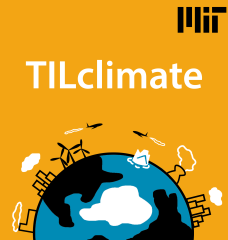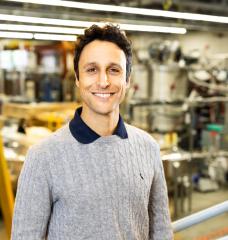
Winners of the 2018 ClimateCoLab Energy Supply Contest are developing sustainable technology to mitigate climate change.
The 2018 Climate CoLab Energy Supply Judges’ Choice Award Winner, Jakob Jensen, alongside his team at Heliac, are changing the game for inexpensive and efficient solar cookers. In describing his personal mission, Jensen states, “I thrive on solutions that increase quality of life while decreasing environmental impact and sometimes disrupting industries.” In collaboration with CEO Henrik Pranov, and team members Sedi Byskov and Akiko Ishibashi, the Heliac solar cooker was designed to balance sustainability and practicality. It allows families to cook without the economic costs of electricity, or the environmental costs of flames and fuel usage. Through its uniquely designed lens--which focuses sunlight in the way a magnifying glass does-- water can be boiled and food can be cooked. The Heliac Solar cooker also integrates seamlessly with users’ kitchenware, allowing for easy implementation in homes.
The Heliac Solar Cooker is designed to maximize social and environmental impacts. Its lens is mass-producible, and the final market price of the cookers is below $80 making it comparatively accessible for lower income households. Additionally, it boils water in 10-15 minutes, at a significantly lower cost. While the lenses need to be replaced every 1-2 years for $10, the cooker is far less expensive and more efficient than similar products on the market-- which sell for around $500.
Environmentally, the cooker has the potential to reduce carbon emissions significantly. Approximately 2.6 billion people cook using an open fire, and each cook stove emits 1-3 tons CO2 annually. Through transitioning into solar cookers, the potential for annual CO2 savings is one gigaton, or about 3% of the total global CO2 emissions.Open-fire cooking produces pollutants from charcoal and other biomass, which are significant contributors to climate change. The Heliac cooker also hopes to reduce deforestation, as it decreases the demand for firewood. Jensen describes the cooker as “a collaborative project, where partners with better market insights, market access, funding, and production capacity will be instrumental in helping us achieve our goal helping as many people as possible as fast as possible”.
The inspiration for the Heliac Solar Cooker came from an unlikely source. CEO and co-founder of Heliac, Henrik Pranov, initially developed the lens technology for a dairy company interested in yogurt-repellent surfaces. Jensen states, “We then looked at what other areas structured surfaces can be of value. A very good candidate for this is to guide light. Being able to guide light means we are able to make large lenses that work as magnifying glasses. And being able to make magnifying glasses means being able to generate heat.”
Jensen and his team are optimistic about Heliac moving forward. Jensen states “we believe that different designs, different choice of materials, other uses than cooking, smarter distribution, sales, and financing methods may help the use of the cooker become widespread and much faster than what we, at Heliac, can do on our own.” They are also excited about the cooker’s potential to be used for water sterilization through boiling. Jensen comments this improvement will help, “countries with plenty of water, but low drinking quality, and migrants that need to be able to get clean water when they are on the move.”
They are hoping the impetus from winning a Climate CoLab contest will help reduce the use of open-fire cooking and allow the Heliac cooker to move into the public sphere.




